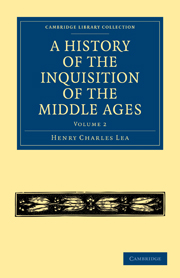Summary
In France we have seen the stubbornness of heresy in alliance with feudalism resisting the encroachments of monarchy. In Italy we meet with different and more complicated conditions, which gave additional stimulus to antagonism against the established Church, and rendered its suppression a work of much greater detail. Here heresy and politics are so inextricably intermingled that at times differentiation becomes virtually impossible, and the fate of heretics depends more on political vicissitudes than even on the zeal of men like St. Peter Martyr, or Rainerio Saccone.
For centuries the normal condition of Italy was not far removed from anarchy. Spasmodic attempts of the empire to make good its traditional claim to overlordship were met by the steady policy of the papacy to extend its temporal power over the Peninsula. During the century occupied by the reigns of the Hohenstaufens (1152–1254), when the empire seemed nearest to accomplishing its ends, the popes sought to erect a rampart by stimulating the attempts of the cities to establish their independence and form self-governing republics, and it thus created for itself a party in all of them. North of the Patrimony of St. Peter the soil of Italy thus became fractioned into petty states under institutions more or less democratic. For the most part they were torn with savage internal feuds between factions which, as Guelf or Ghibelline, hoisted the banner of pope or kaiser as an excuse for tearing each other to pieces. As a rule, they were involved in constant war with each other.
- Type
- Chapter
- Information
- A History of the Inquisition of the Middle Ages , pp. 191 - 289Publisher: Cambridge University PressPrint publication year: 2010First published in: 1888

